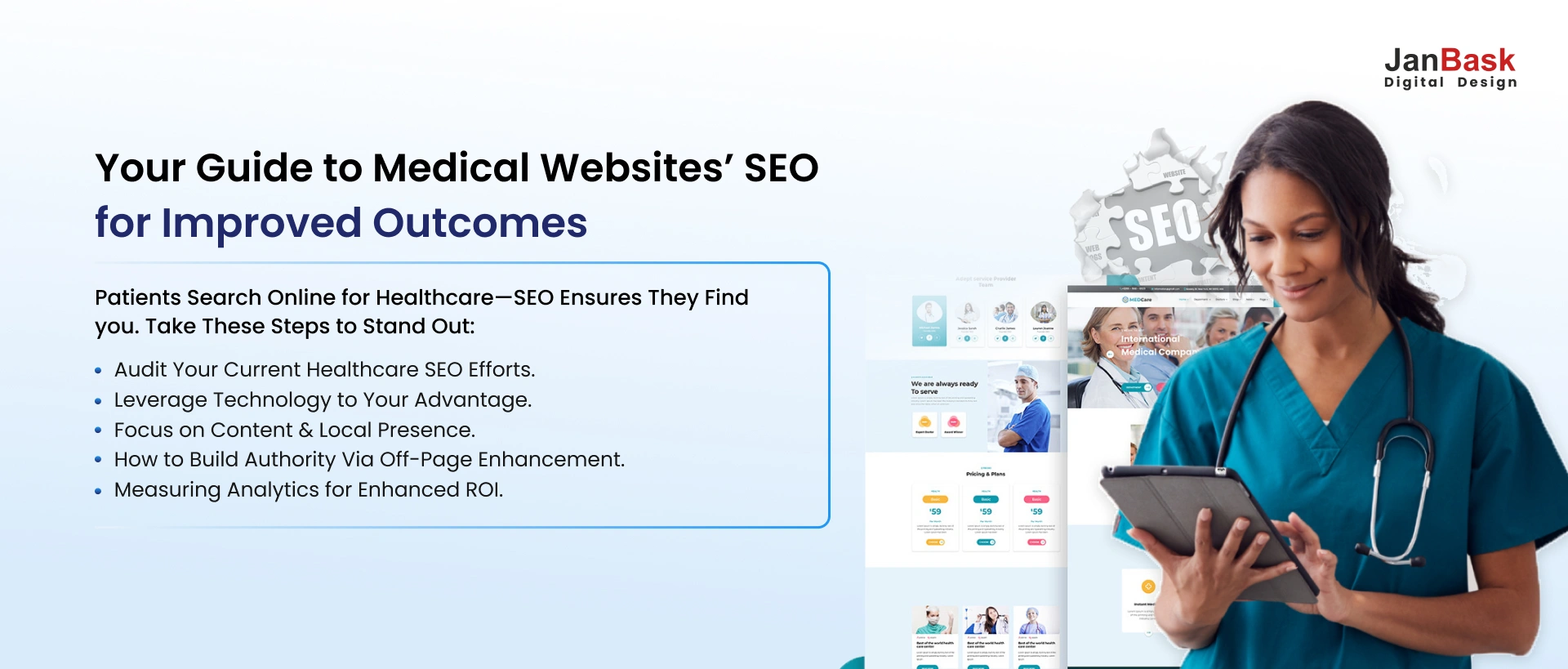
Healthcare marketing is all about connecting patients to the care they deserve. It’s not solely about advertising services; it’s about cultivating trust, providing meaningful content, and fostering enduring relationships. A user-friendly website, engaging social media posts, and personalized outreach help patients feel confident and informed about their decisions. At its basic level, healthcare marketing means making care available, relevant, and trustworthy while helping providers differentiate significantly.
Before we dive into the nitty gritty of healthcare marketing ideas, let’s start by breaking down the difference between the two because this is the secret sauce to successful marketing!
A marketing strategy is a long-term plan on how a healthcare business wants to achieve its marketing objectives to gain a competitive advantage in the marketplace. It depends on the business's goal and how best to position the brand, product, or service to engage the target audience. A marketing strategy is like a compass of your business that coordinates all your marketing activities and efforts in the same direction. An approach driven by a plan will create a focused and effective effort. It also ensures consistency in messaging, aids resource allocation, and positions your healthcare business for sustainable growth.
In short, a marketing strategy is focused on the “what” and the “why” of your marketing efforts. The essential elements behind successful campaigns are clarity and focus, which ensure long-term success.
A hospital marketing plan is a comprehensive step-by-step roadmap guiding a business in marketing its products, services, or brand to achieve set objectives. More specifically, a hospital marketing plan is the "how to" for executing marketing efforts across an organization, ensuring resources are used effectively and desired outcomes are achieved. A clear and defined path of action is a key element to a successful marketing plan for healthcare. It keeps everyone on the same page so they know what to do, which helps prevent wasted effort and increases the likelihood of achieving success. It also allows companies to adjust to change and assess what works by having distinct steps, timelines, and evaluation measures.
Strategic healthcare marketing ideas connect patients with high-quality care and helps providers stand out in a competitive market. But how do you earn patients’ trust in one of today’s most competitive landscapes? The solution is to offer targeted, convenient communication that solves their problems.
A strong marketing strategy builds credibility and presents your expertise, services, and patient success stories. This also helps patients discover and engage with your services online, thus providing the most accessible care. But what is unique about your healthcare offering? By implementing strategic marketing, you can showcase what your facility does best: specific therapies, advanced technology, or unparalleled care.
Strategic marketing not only results in growth, but increases patient acquisition and builds lasting relationships in the long run. Do you use data-backed insights to optimize your collaboration and reach your objectives? If not, you’re passing up a great opportunity.
Ultimately, healthcare marketing techniques are not just about promoting services — they’re about establishing trust, connecting with your community, and empowering patients to make informed choices about their health. Let’s Get Your Healthcare Marketing Striving Up!
In the fast-evolving world of healthcare, standing out in the market while building trust with your audience is more critical than ever. A strong healthcare marketing strategy can make all the difference in attracting new patients and building lasting relationships with them.
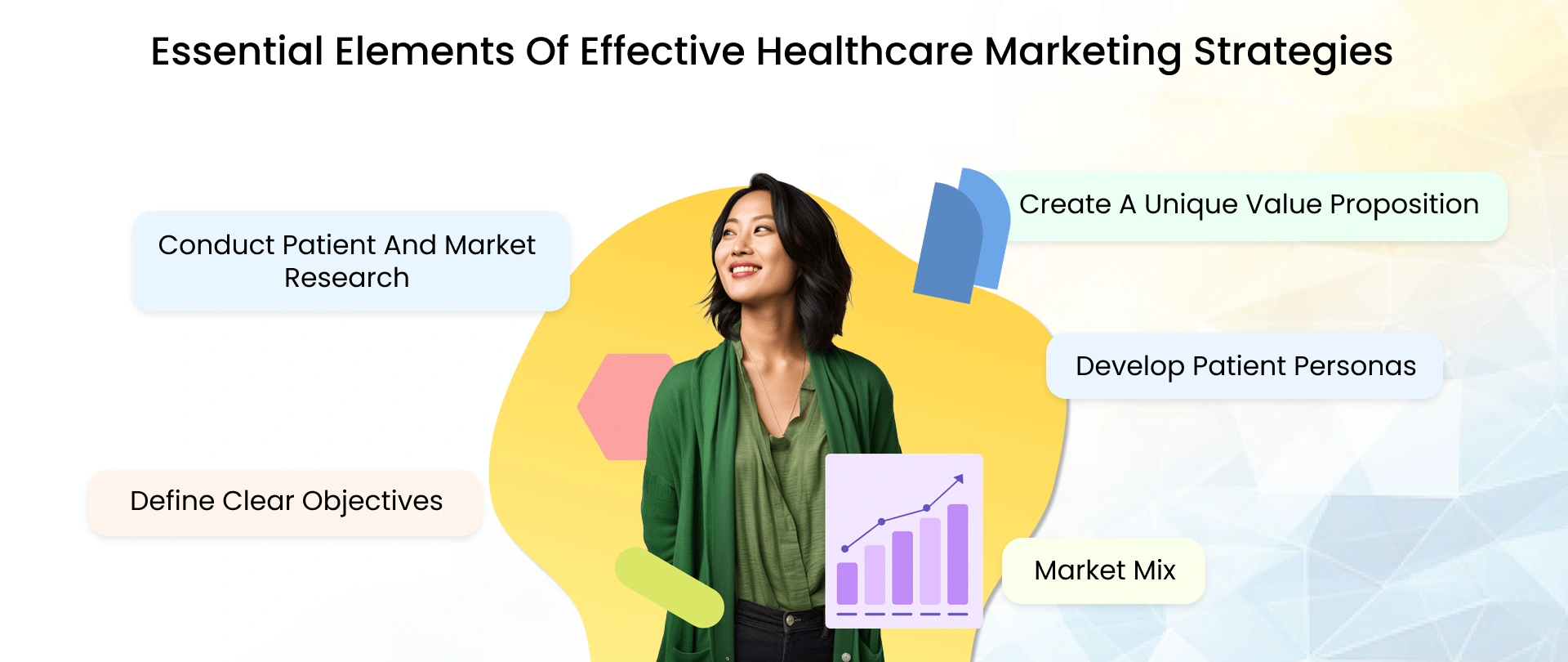
Creating a successful marketing plan for healthcare requires a thoughtful, comprehensive approach. From understanding your audience’s needs to executing campaigns that engage and convert, each step plays a crucial role. Here’s a step-by-step guide to help you create an effective, patient-centered, and results-driven healthcare marketing strategy.
The first step in an effective healthcare marketing strategy is getting to know your audience. Take time to gather insights about your patients – their needs, the problems they face, and their behavior while they search for healthcare services online. Understanding your patients on a different level allows you to customize your services accordingly.
Second, be sure to look at what competitors are up to. Take a deeper look into the landscape and find areas where there are gaps or unidentified opportunities. This isn’t so much about what the others are doing right; it is about how you can differentiate yourself and offer something unique. The aim is to leave with every scrap of intel you need to position yourself best and make you the go-to provider in your market!
Now you have some information, it’s time to get super clear on what you want. What’s the ultimate objective of your marketing strategy? Are you trying to get more patients? Increase engagement? Strengthen your brand? Setting clear goals gives your strategy focus, prevents it from going off track, and ensures you spend time on the right things. The more you clarify your goals, the simpler it becomes to create a plan that can make an impact. Think of it as programming your GPS before a road trip — you must have a destination to get where you want to go!
This is your chance to share how your healthcare organization truly stands out from the crowd. Consider what makes you better than everyone else — what the rest cannot deliver. Whether it's world-class care, state-of-the-art technology or an individualized patient journey, your value proposition should answer why the patient should choose you. It’s not just about what you do but how you do it better than anyone else. Create something that sticks, resonates, and connects with your audience’s pain points. This is your opportunity to sell yourself and explain why you would be the best fit!
Let's get personal now that you know who you’re talking to. Creating personas for your patients can be considered a profile of the variety of patients you see. These personas are driven by the insights you collected—demographics like age, location, health needs, and preferences around how they interact with healthcare. By creating these detailed personas, you’ll learn to speak directly to each group’s unique needs — from young professionals who want preventive care to seniors who need specialized treatments. It’s about tailoring your message to connect with them emotionally and ensuring that your services will be delivered.
Visualize having the ideal care plan for your patients. Every detail matters, but how you combine those details makes the difference. Just as the Marketing Mix is a collection of the most essential elements you can combine and use to design, deliver, and promote what patients want, trust, and need, so is the Marketing Mix in healthcare. This 4Ps concept (with added 3Ps for services) keeps your healthcare practice patient-centric and differentiated in a competitive environment.
The Marketing Mix enables healthcare providers to respond to changing patient expectations, differentiate themselves in a saturated environment, and lay the foundation for continued success by delivering quality outcomes and patient satisfaction.
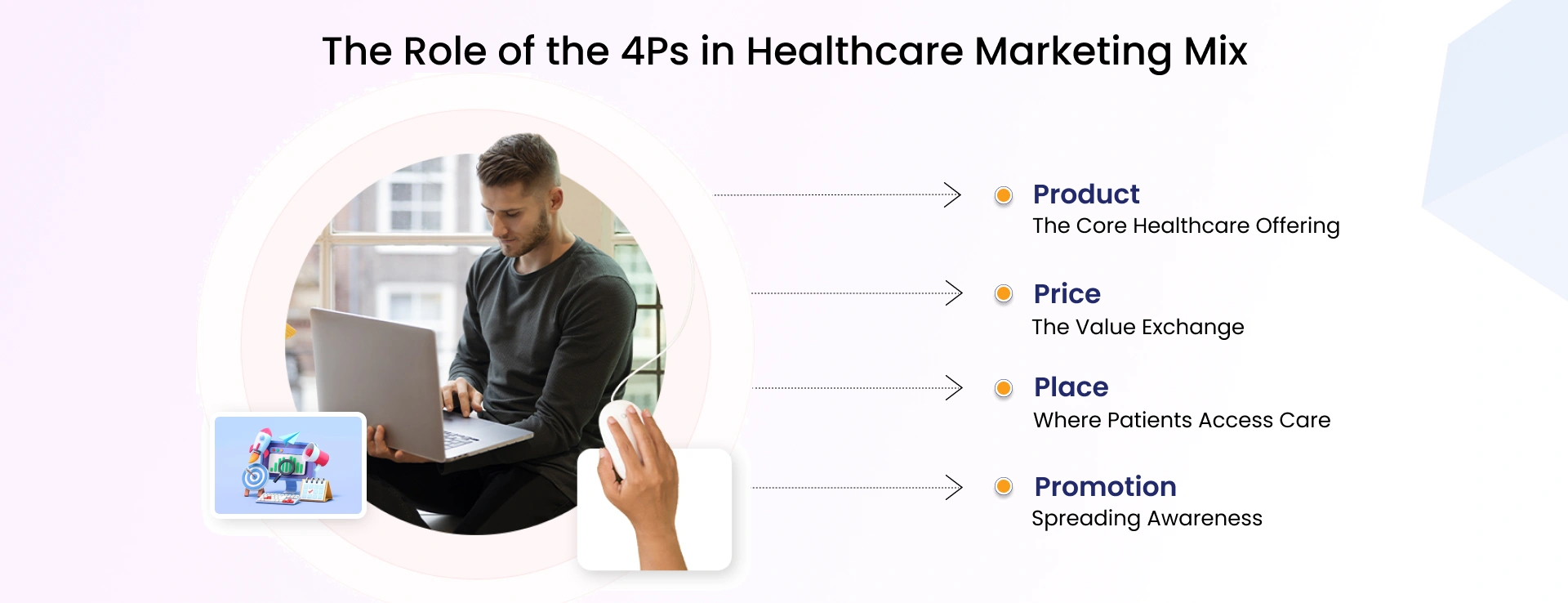
In healthcare, you are selling the product— the service you deliver (e.g., treatment services, consultations, wellness services, etc.). Such products and services have to be designed purposefully, focusing on meeting the specific needs of patients, enhancing quality of life, and providing avenues for overcoming obstacles in healthcare delivery.
Healthcare pricing is not just about the numbers – it is about the return a patient gets. Transparent, accessible pricing helps to build trust and helps patients to understand what they are paying for. Pricing strategies should align with patient expectations to deliver substantive, excellent care through bundled services, flexible payment options, reasonable pricing rates, etc.
Accessibility is one of the pillars of healthcare delivery. Whether through brick-and-mortar venues — clinics and hospitals — or virtual ones — telehealth and online portals — services should be easily discoverable and accessible for patients. This aspect depends on its convenience, availability, and reach.
Healthcare promotion is about raising awareness, educating patients, and establishing trust. The most effective communication strategies convey the value of services and expertise to patients, ensuring they understand how the offerings can address their needs. Advertising can take the form of campaigns, community programs, or even digital and social platforms to connect with your audience.
Now that you know the main 4Ps of marketing ideas for healthcare, it’s time you explore additional 3Ps to tick off all boxes now rather than regret not taking your chances later.

Staff and patients alike are at the heart of the healthcare experience. Empathy and perception-driven professional services create a basis of trust and satisfaction. A lasting impression is made during these interactions, directly influencing the perception of care quality.
Processes in healthcare are about establishing seamless, high-quality experiences for patients. Optimized and patient-focused processes from appointment booking to follow-up care strengthen trust, relieve stress, and facilitate a smoother path through the healthcare system.
This dimension is all about the visible and tangible aspects of the healthcare service — the cleanliness and professionalism of the facilities, the accessibility of the digital platforms, and the quality of the informational materials. These are features that demonstrate the reliability and trustworthiness of care.
The Marketing Mix is a holistic framework that enables the alignment of healthcare services with the needs and expectations of patients. Each element is essential to the overall experience:
Creating a winning marketing plan is crucial for the success of any business, big or small. It’s the blueprint that guides your efforts, ensures you stay on track, and helps you achieve your goals. However, crafting a marketing plan that truly works requires a strategic approach, a deep understanding of your audience, and clear objectives
Choosing the proper marketing channels is the best approach for reaching your patients. It’s about understanding where your audience spends time and how they like to interact. Each channel is powerful in its way, be it social media, email, SEO, or paid ads. The answer will be to follow patients who are most influenced to react or need information and take action.
Which strikes a better chord with them: is Facebook where your patients are most active, or would they respond better to the visual impact of Instagram? Do they search for services on Google or depend on email messages for news and pitches? Once you determine where your patients will most likely find your message, you can tailor your marketing strategy to meet them there. Let’s break down some of the most common channels available to you in healthcare marketing techniques, as well as how you can harness the power of each to fit your patient’s needs:
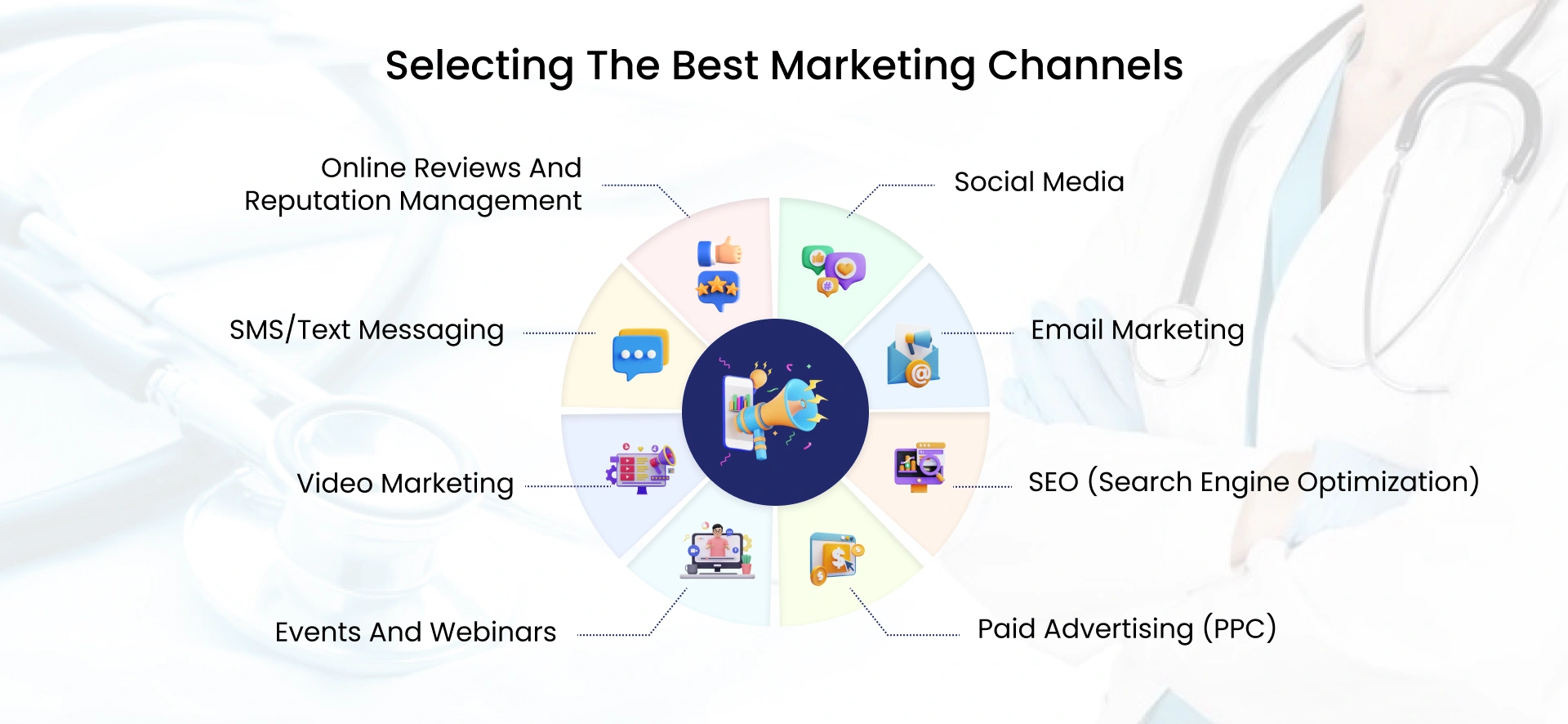
Platforms like Facebook, Instagram, LinkedIn, and Twitter can help you reach a broader audience. In healthcare, social media could be used for:

Email is still one of the better tools you can use to speak directly to your patients and send them highly tailored content. Here are some email best practices:

Optimizing your healthcare practice online ensures it appears to patients searching for relevant keywords or services. More people than ever rely on Google to find healthcare providers, making it essential to have a well-structured SEO strategy in place. Consider the following:

Paid advertising, like Google Ads, Facebook Ads, or Instagram Ads, is for targeted patient demographics and immediate traffic to your website. The standard classifications of paid ads are:

Any patient would almost certainly consult an online review before making that appointment or selecting a health provider. Google, Yelp, and Healthgrades allow patients to leave feedback for providers. Positive reviews do the following:

Sending a buzzing text has turned into an efficient tool for patient engagement. It is speedy, straightforward, and has very high open rates. The text messaging service can be used to:

Video marketing is trending these days among all healthcare marketing techniques. Videos can:

Events and webinars can be potent healthcare marketing tactics and are unique mediums for engaging patients, developing relationships, and educating them. The mode is face-to-face or online; thus, it can be implemented virtually with a broader audience. Here is how they could help:

Knowing where your patients go and what treatments they respond to is a key factor in choosing which marketing channels are the most appropriate consideration. Different platforms present different opportunities for interacting with patients, and successful marketing strategies in the healthcare industry are often multi-platform approaches that consider all. Engagement is nurtured, trust is built, and patient visits are increased when marketers align their marketing efforts considering patient preferences and patient needs.
Are you reaching your patients through the proper channels? It could make all the difference if you define where your audience is hanging out and tailor your investment strategy accordingly.
Patient-targeted content works wonders in creating a trust to convince patients that you aren't just another healthcare provider but a trusted resource. Focus on education, engagement, and value-giving to patients by crafting a content strategy:
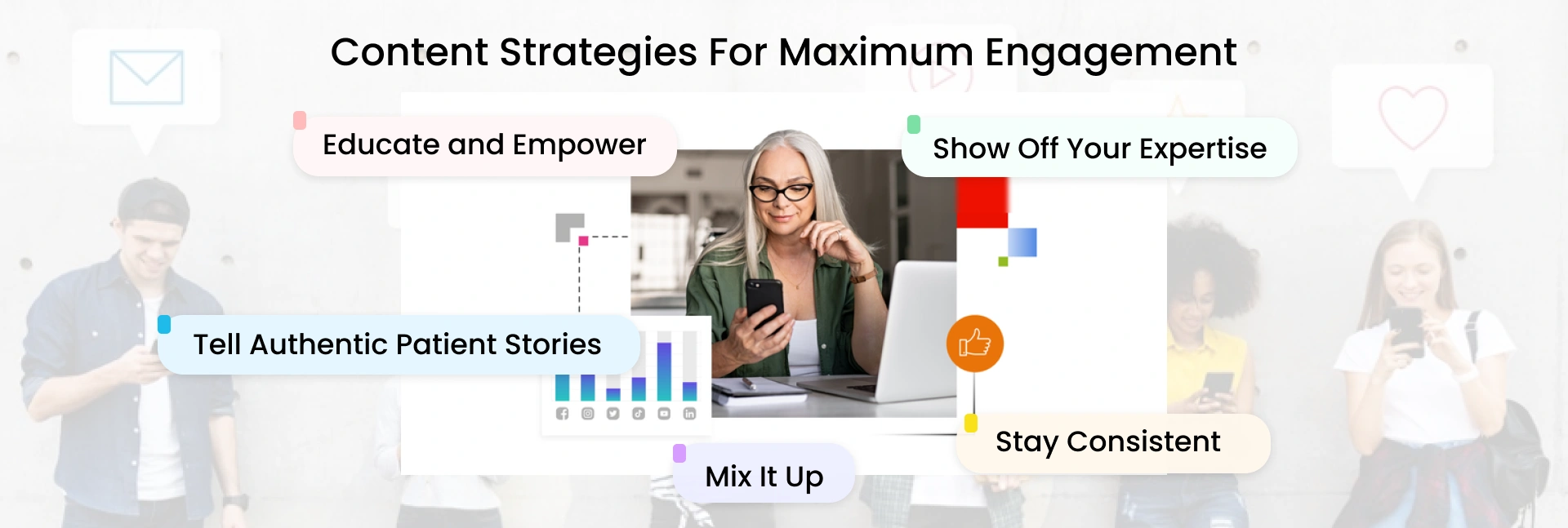

It is essential to have a clear, demarcated budget for healthcare marketing tactics and where you will spend your money to make your efforts effective and sustainable. Otherwise, it will become easy to overspend or miss an opportunity that could have turned your and your healthcare venture’s life around. Here is how to do it right:
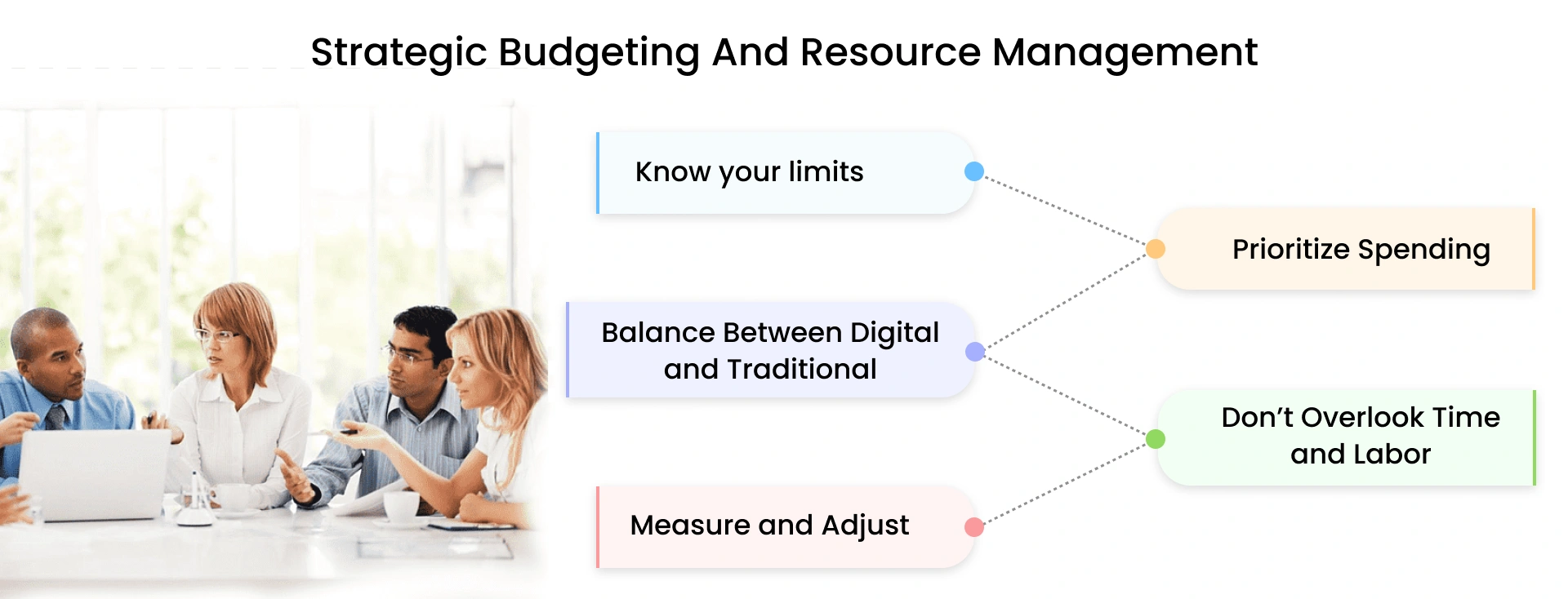
Performance tracking is the only way to ensure your marketing efforts yield results. Implementing a strategy is insufficient; it should be measured and changed for continuous improvement. Here are some of the ways that you can do effective tracking and optimization:
1. Use Analytics Tools: With platforms such as Google Analytics, social media insights, or email marketing analytics, analyze how your campaigns are running. These tools can measure real-time data related to content, ads, and outreach.
2. Monitor Key Performance Indicators (KPIs): Pinpoint the most meaningful KPIs for your practice. Some of the more common metrics to track include:
3. Analyze and Adjust: Do not set it and forget it. Instead, regularly analyze the relevant metrics and make adjustments according to facts. If you notice one campaign outpacing another, shift resources to the successful one. If something's not working, tweak it or try a different approach.
4. Test and Optimize: A/B test in which ad creatives, landing page designs, or email subject lines determine what works best with your audience. Continuous optimization will finally give you the maximum result from your budget and resources.
Medical marketing strategies take a special place in today's healthcare environment, and it is committed to ushering in growth, creating bonds, and establishing trust by ensuring that patients feel valued at every point of contact and consultation. The fact is that marketing ensures that the competition is kept at bay and that you stand apart in the aspects that matter.
At JanBask Digital Design, we are passionate about formulating tailored marketing strategies in healthcare industry to help you in that respect. Whether it's a beautiful website, targeted ad campaigns, or SEO rankings, we help you connect to the audience and meet your goals.
C
This post hit all the major points—SEO, patient experience, email marketing, even reputation management. Solid stuff!